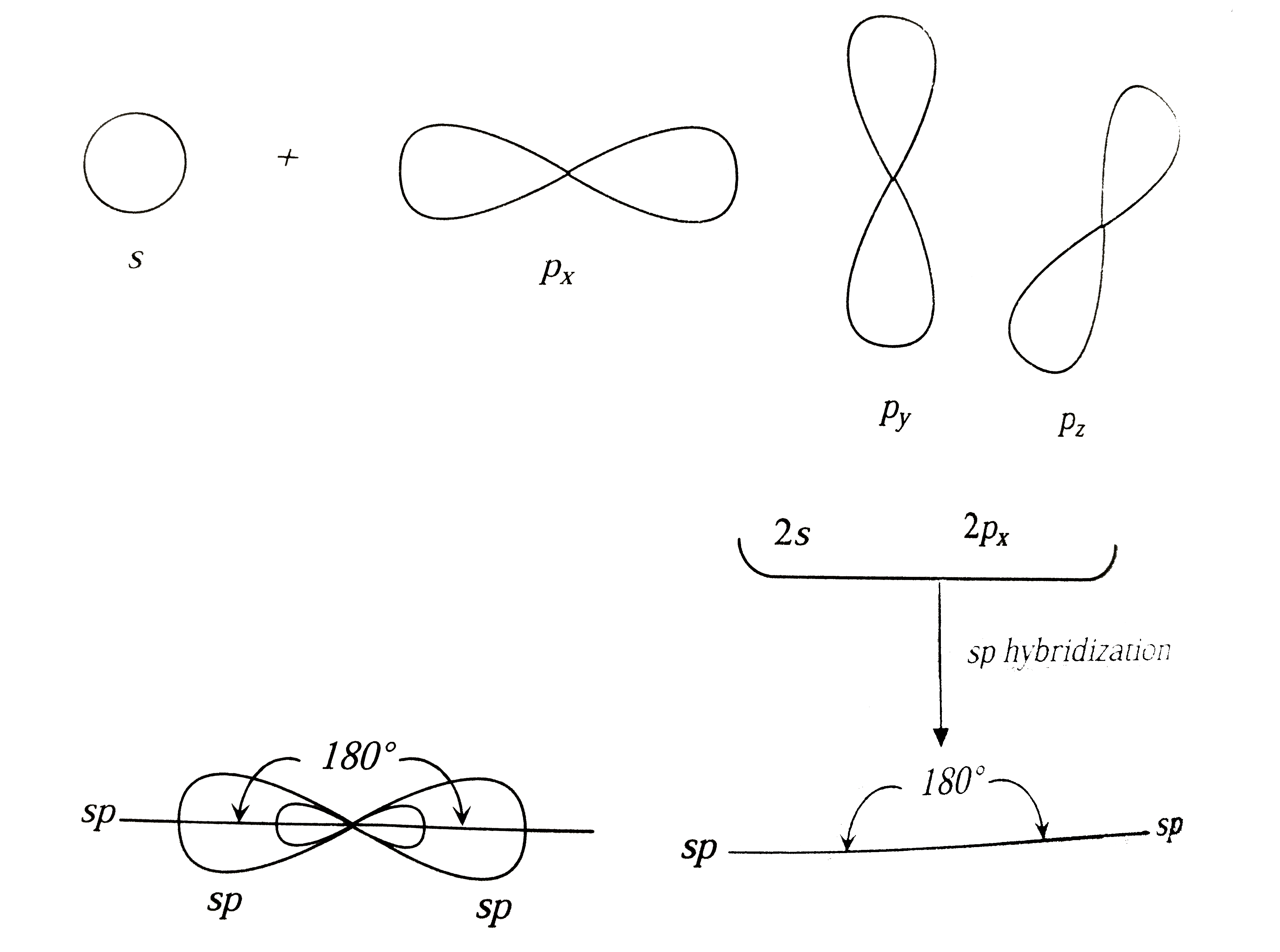One hybridization of one and one orbital we get
Two mutually perpendicular orbitals
Two orbitals at
Four orbitals directed tetrahedrally
Three orbitals in a plane
The correct Answer is:B
This type involves the intermixing of one s and one p (say ) orbitals to give two equivalent hybrid orbitals, known as sp hybrid orbitals. The two sp hybrid orbitals are directed diagonally, i.e., in a straight line with an angle of (collinear orbitals) . the other two p orbitals (say and ) remain pure.

Topper's Solved these Questions
- CHEMICAL BONDING BOOK - ERRORLESS CHAPTER - CHEMICAL BONDING EXERCISE - JEE Section (More than one correct answer)
12 Videos
- CHEMICAL BONDING BOOK - ERRORLESS CHAPTER - CHEMICAL BONDING EXERCISE - JEE Section (Reasoning type question)
4 Videos
- CHEMICAL BONDING BOOK - ERRORLESS CHAPTER - CHEMICAL BONDING EXERCISE - Critical thinking( Objective question)
22 Videos
- CARBOXYLIC ACID AND THEIR DERIVATIVESBOOK - ERRORLESS CHAPTER - CARBOXYLIC ACID AND THEIR DERIVATIVESEXERCISE - Jee Section (Matrix Match type Questions)
2 Videos
- CHEMICAL EQULIBRIUMBOOK - ERRORLESS CHAPTER - CHEMICAL EQULIBRIUMEXERCISE - JS JEE SECTION (ONLY ONE CHOICE ANSWER (Matrix)
1 Videos
Similar Questions
Knowledge Check
On hybridization of one s and one p orbital we get
Atwo mutually perpendicular orbitalsBtwo orbitals at 180∘Cfour orbitals directed tetrahedrallyDthree orbitals in a plane.On hybridisation of one s and one p orbital we get
AThree orbitals in planeBFour orbitals in planeCTwo mutually perpendicular orbitalsDTwo orbitals at 180 degreeOn hybridisation of one s and three p-orbitals, we get
Afour orbitals with tetrahedral orientationBthree orbitals with trigonal orientationCtwo orbitals with linear orientationDtwo orbitals with perpendicular orientation.
The angle between the overlapping of one s-orbital and one p-orbital is
View SolutionWhich one is an outer orbital complex ?
View SolutionWhich one is an outer orbital complex ?
View SolutionHybridization is a concept of mixing or merging of orbitals of same atom with slight differences in energies to redistribute their energies and give new orbitals of equivalent energy called 'Hybrid Orbitals'. Hybridisation is a hypothetical concept and never actually exists.
One should not be confused by a common misconception that hybridization is responsible for particular geometry. Geometry of a molecule is decided by energy factor not by hybridization. It is the orbital (which may be half filled, completely filled or empty) that undergoes hybridization and not the electron. The bond angles in hybridised orbitals are influenced by presence of lone pair, presence of multiple bonds, presence of one electron and electronegativity of atom.
An increase in s-character of hybridised orbitals results in decrease in size of orbitals. This results in decrease in bond length and increase in energy.
Among the following which have the same molecular geometry?
(P) I−3
(Q) XeF4
(R) BrF−4
(S) XeO2F2
View SolutionA hybrid orbital formed from s and p-orbital can contribute to
View Solution
